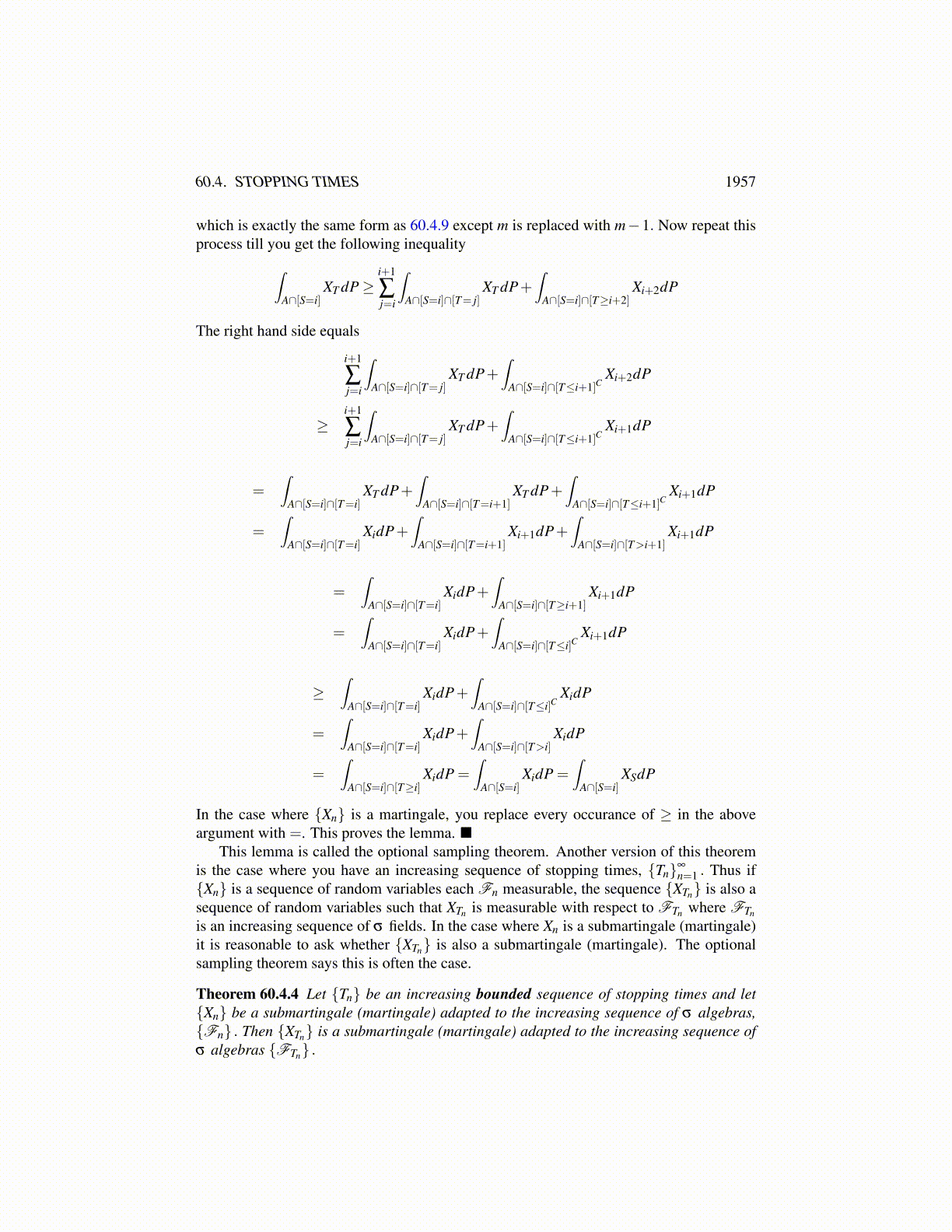
60.4. STOPPING TIMES 1957
and [T ≤ n] ∈Fn because T is a stopping time. Since n is arbitrary, this shows FS ⊆FT .It remains to verify FT is a σ algebra. Suppose {Ai} is a sequence of sets in FT . Then
I need to show that (∪∞i=1Ai)∩ [T ≤ j] ∈F j for all j.
∪∞i=1Ai∩ [T ≤ j] = ∪∞
i=1 (Ai∩ [T ≤ j])
Now each (Ai∩ [T ≤ j]) is in F j and so the countable union of these sets is also in F j.Next suppose A ∈FT . I need to verify AC∩ [T ≤ j] ∈F j for all j. However, [T ≤ j] ∈F jand Ω ∈F j so Ω ∈FT . Thus
Ω∩ [T ≤ j] = (A∩ [T ≤ j])∪(AC ∩ [T ≤ j]
)and so (
AC ∩ [T ≤ j])= Ω∩ [T ≤ j]\ (A∩ [T ≤ j]) ∈F j.
This proves the lemma.
Lemma 60.4.2 Let T be a stopping time and let {Xn} be a sequence of random variablessuch that Xn is Fn measurable. Then XT (ω)≡ XT (ω) (ω) is also a random variable and itis measurable with respect to FT .
Proof: I assume the Xn have values in some topological space and each is measurablebecause the inverse image of an open set is in Fn. I need to show X−1
T (U)∩ [T ≤ n] ∈Fnfor all n whenever U is open.
X−1T (U) = ∪∞
i=1X−1i (U)∩ [T = i] .
It follows X−1T (U) ∈F . Furthermore,
X−1T (U)∩ [T ≤ n] = ∪∞
i=1X−1i (U)∩ [T = i]∩ [T ≤ n]
= ∪ni=1X−1
i (U)∩ [T = i]∩ [T ≤ n]
= ∪ni=1
in Fi︷ ︸︸ ︷X−1
i (U)∩ [T = i] ∈Fn
and so XT is FT is measurable as claimed. This proves the lemma.
Lemma 60.4.3 Let S≤ T be two stopping times such that T is bounded above and let {Xn}be a submartingale (martingale) adapted to the increasing sequence of σ algebras, {Fn} .Then
E (XT |FS)≥ XS
in the case where {Xn} is a submartingale and
E (XT |FS) = XS
in the case where {Xn} is a martingale.